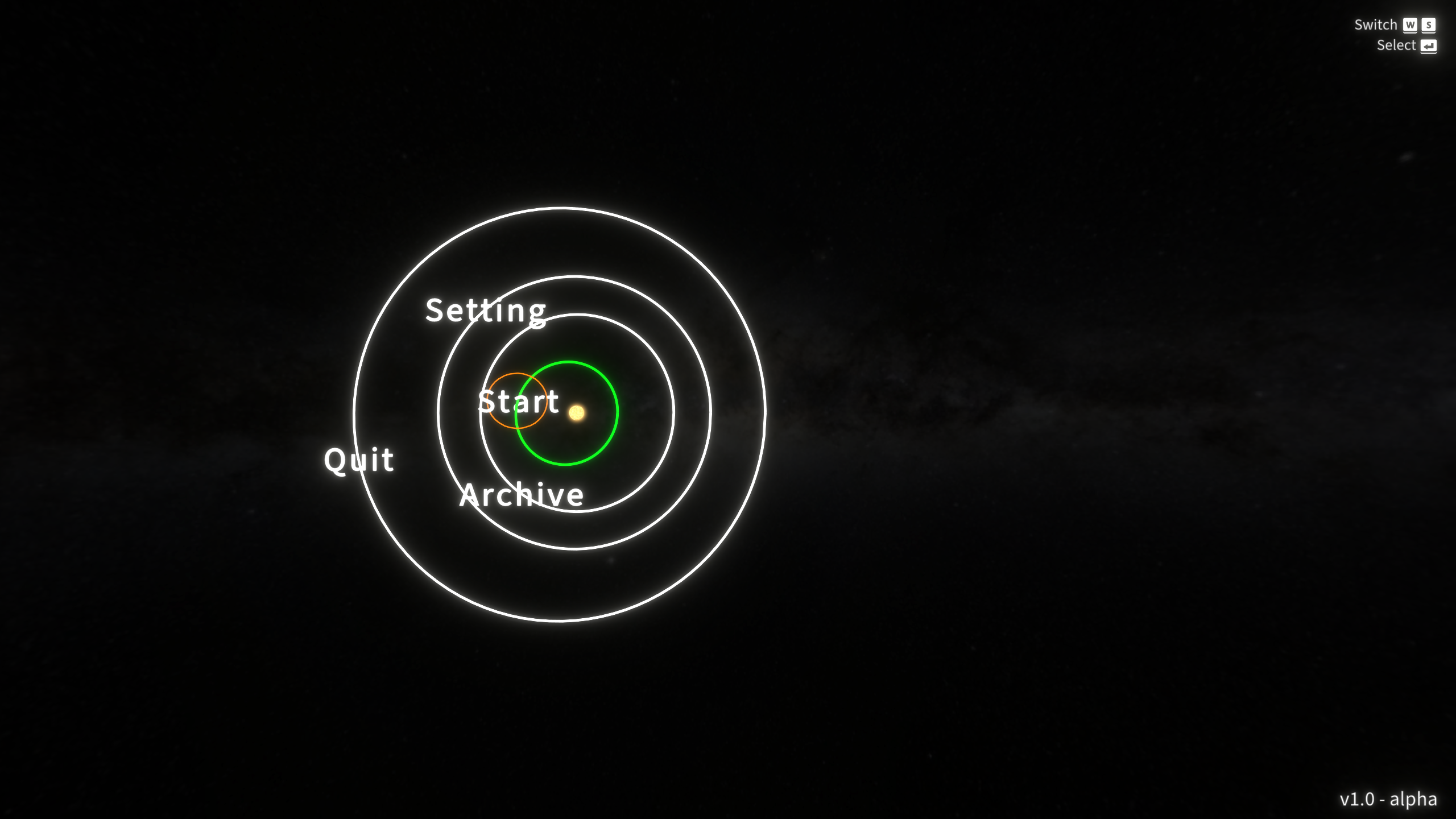Universe Unveiled | 寰宇揭纱
OVERVIEW
Game Concept
- Space
- Science
- Education
Story
Players will control an alien spacecraft that arrives in the solar system, maneuvering on orbits to approach various planets to collect their knowledge. Once players gather data from each planet, they can read about the knowledge of each planet in the archive.
 Screenshot from Universe Unveiled
Screenshot from Universe Unveiled
Idea
This game is an educational type of science popularization game. When designing it, I defined the gameplay scenes of the game as a science and technology exhibition hall, with the target audience being those little ones who are eager to explore the universe.
I believe that learning about spaceship maneuvers between orbits and the effects of gravity on celestial bodies from books is far less effective than personally controlling a spaceship and intuitively experiencing it all. Therefore, I created this educational game.
This is a practical integration of gaming and education. Throughout the design and development of this game, I have learned a lot.
Inspiration
The inspiration for the game comes from a series of space exploration movies, games, such as Interstellar, Outer Wilds, and Starfield, and I myself have a lot of curiosity about the universe. At the same time, educational games often have high requirements for authenticity because they are used to present real scientific knowledge.
Combining my curiosity about the universe with the demand for authenticity in educational settings, I came up with the idea of “Players exploring the solar system.” The initial gameplay of the game—where players directly control spacecraft and perform orbital transfers—aligns with this vision.
MY CONTRIBUTIONS
Design
I have completed most of the design for this game, including the representation of the space environment, the connections between various scenes, game mechanics, and logic, and so on.
The atomic behaviors within the game mechanics—target selection, orbit adjustments, and flight—also involve a fundamental feedback loop. The player-controlled spaceship must fly within a certain range of planets. Controlling the spaceship is essentially a process of assessing the current situation and devising strategies accordingly. Such actions not only encourage players to consider the environment in space for better learning but also effectively exercise children’s strategic thinking, learning abilities, and capacity to face challenges.
Gameplay Iteration
In the initial design, players would directly control the spacecraft, down to its rotation, orientation, and when to ignite thrusters for acceleration. However, the consequences of this approach quickly became apparent—after multiple attempts, even I couldn’t complete a simple flight.
The game features a highly realistic space system, and allowing players full control over the spacecraft on such a basis undoubtedly increases the game’s difficulty. Since the ultimate audience for educational games will be children, extremely difficult operations are definitely not what I want.
After rethinking the design, I have decided to simplify the spacecraft’s control system. If you want a system to be less complex, you just need to simplify it upwards, incorporating more detailed operational behaviors into a concise set of controls.
In the end, after simplification, players only need to choose the orbit to fly, the insertion point, and the arc of the flight curve, with the rest being automatically handled by the system. While this approach may reduce the sense of immersion in spacecraft control, it better demonstrates the behavior of space orbital transfers. And let’s never forget the game’s audience: creating an educational game that any child cannot operate smoothly would undoubtedly be a huge failure.
UI Design
I have always believed that cohesion in game design is crucial and often lacking in many games today. Nowadays, game UIs often follow standard frameworks, but I aim to integrate UI more tightly with the game itself. The style of the UI should align with the game, and it can also hint at gameplay mechanics.
In this game, the menu is designed in the style of planetary orbits, with option buttons moving along the orbit like planets. To ensure readability, I’ve also added an outer ring of orange halo for identification. These elements are also part of the game’s mechanics.
MORE DOPE PICTURES…
 Solar System: The real scale of the Solar System is very different from what many people think.
Solar System: The real scale of the Solar System is very different from what many people think.  Earth: You can see the Earth! All planets have highly detailed 2K textures whenever possible.
Earth: You can see the Earth! All planets have highly detailed 2K textures whenever possible.  Orbit Selection: The spaceship and target planets are differentiated by blue and orange outlines. I particularly enjoy the bloom effect, as it adds a futuristic feel to the clean lines.
Orbit Selection: The spaceship and target planets are differentiated by blue and orange outlines. I particularly enjoy the bloom effect, as it adds a futuristic feel to the clean lines.  Spaceship and Jupiter: When their orbits intersect, it signifies that the player has gathered information.
Spaceship and Jupiter: When their orbits intersect, it signifies that the player has gathered information.  Archive: Swipe left or right to view information about different planets.
Archive: Swipe left or right to view information about different planets.  Information about Mercury: I admit that the UI here is very rudimentary; we simply didn’t have the time to make it better.
Information about Mercury: I admit that the UI here is very rudimentary; we simply didn’t have the time to make it better.
CREDITS
- Development: 韩浩天(Me)、刘祺玉
- Special Thanks: NASA
If you have any questions please feel free to contact me



